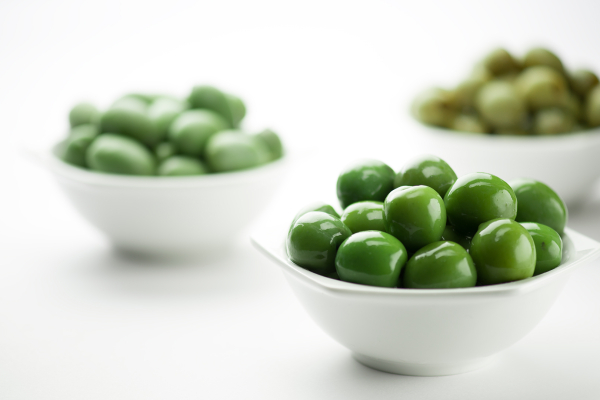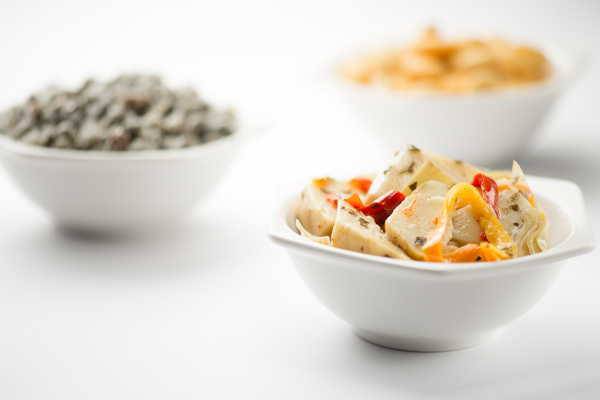
Olives are amongst the most ancient food products known to man. Their history is ancient and their trees can live to be as old as millennia. Their production is amongst the most broad in the world, wildly concentrated in the Mediterranean basin, given the favourable climate that allows these trees to thrive. Italy is amongst one of the biggest exporters of gourmet olives, and surely Italian olives (such as those from Sicily or Liguria) are of an exceptional quality. But we offer a wide range of different types of olives (for example, also from Greece or Morocco), which allows us to satisfy al palates and flavour profiles.
While 90% of olives are cultivated for the production of oil, only the most exquisite ones are used as fresh olives. But the varieties and types of olives are very distinctive. They differ in shape (from those that are rounder to those that are more oval), in size (from those that are smaller and firmer to those that are larger and juicier), in colour (from a green yellow to a shiny black) and, obviously, in flavour. This last characteristic depends largely also on the type of conservation method (whether, for example, they are brined, or fermented and pasteurized). These gems can be pitted or whole, stuffed, or, if you prefer, prepared according to our ancient traditional marinade recipes.
However one chooses to consume our table olives, what is certain is that you will not only be swept over by an exquisite flavour, but you will also receive a strong intake of phenolic compounds and Vitamin E. These have both been demonstrated to have positive effects on the cardiovascular system and strong anti-oxidant agent. The mono-unsaturated fatty acids keep bad cholesterol at bay and potassium aids digestion.
If you want to be transported on a flight of flavour, you should view the characteristics of our single products and choose the ones that best reflect your palates and your flavour preferences… and we dare you not to drool! But as Oscar Wilde said: “the only way to get rid of temptation is to yield to it”.
Green Olives

Black Olives

Share on



Follow us on